- Home
- Alistair Moffat
The Faded Map: The Lost Kingdoms of Scotland Page 6
The Faded Map: The Lost Kingdoms of Scotland Read online
Page 6
Faded, almost unrecognisable and certainly forgotten, the relics of Continental Celtic can still be seen on modern maps. Just as they do to the west of Catrail, its ancient place-names tend to survive in groups, suggesting that Celtic speech communities in remote districts clung on for longer as the sea of English lapped around them. A good example is to be found in a high valley of the upper Tweed, not far from Manor and Horsehope Craig. Around an impressive, tottering ruin called Tinnis Castle (Tinnis is from dinas, ‘a fort’), other Celtic names echo a lost history. Dreva Craig is from tref for ‘settlement’ and it lies below Trahenna Hill and Penvalla, both Celtic names. And around the flanks of this beautiful valley swirls the shade of a legend, a name forever linked to the retreat and defeat of an older Britain. Merlin or Myrddin is remembered at modern places like Merlindale and in much older names like Drumelzier (originally in the form of Dunmedler, ‘The Fort of Merlin’) and commemorated in an extraordinary stained glass window in the old church at nearby Stobo.
Merlin may in reality have been a druid, a last, lingering figure from the pagan past, but the associations with Tinnis and Drumelzier are tenacious. They survived in early Welsh poetry known as the Triads and in one fascinating notice in a sixth-century chronicle. But that is to anticipate events.
While the ancestor of modern Welsh, Continental Celtic, was establishing itself in mainland Britain, a distinct variant began to be heard in Ireland, the western coastlands and islands. Known to scholars as Q-Celtic or Atlantic Celtic, it grew into the modern languages of Irish Gaelic, Scots Gaelic and Manx Gaelic from the Isle of Man. Notoriously difficult to date, the process of language spread and transfer can probably be approximately tracked by the archaeology of trade goods and the tracing of trade routes. It is probably safe to assert that the Selgovan kings and their contemporaries on the western seaboard were speaking these two different variants of Continental and Atlantic Celtic by the beginning of the first millennium BC. And they probably had difficulty in understanding each other.
As always languages change when they move and in Ireland and in the west, Atlantic Celtic developed in revealing and fascinating ways. These are historically very important and can be well illustrated by modern examples and comparisons. Scots Gaelic is not like English, German or any of the Latin-based languages of southern Europe. There is no word for yes or for no. If a Gaelic speaker asks A bheil an t’acras ort? (‘Are you hungry?’), the answers use the verb forms Tha (‘I am’) or Chaneil (‘I am not’). This makes for greater precision and clearer understanding on either side of a question.
Equally fundamental is word order. English and many of the Latin-based languages generally arrange a sentence in a subject-verb–object format while Gaelic usually prefers the verb first, followed by a subject and then an object. Conjugating prepositions are also widely used and they change the spelling and pronunciation of the word to which they are applied. This makes life difficult for learners. Often this mutation affects only the initial syllable of a word – ‘in the paper’, for example, is anns a phaiper, pronounced ‘faiper’ instead of ‘paiper’, as it would be if no preposition had been applied.
There are also strange and very intriguing forms to describe conditions or status or both. The earlier example, A bheil an t’acras ort? literally means ‘Is there hunger on you?’. Or, in order to describe themselves as coming from the island of Lewis, a male Gaelic speaker would say, Se Leodhasch a tha annam – literally, ‘It is a Lewisman that is in me’. This active means of expression appears in all sorts of forms. ‘I am sleeping’ is rendered as Tha mi na mo chadal or ‘I am in my sleeping’.
These forms are very rare and do not appear at all in other European languages, and only about 10 per cent of the world’s languages contain anything like them. Intriguing similarities can, however, be heard in the Near East and along the North African coast. Some Semitic, Berber and Egyptian languages and dialects use many of the same forms found in Atlantic Celtic. Vocabulary differs widely but sentence word order, conjugating prepositions and the use of active verb forms to describe status and condition as well as a dozen other similarities are widely found on the southern shores of the Mediterranean.
Until the reach and mechanisms of trade are taken fully into account, these seem unlikely connections. Amongst the most dynamic early traders in the Mediterranean were the Phoenicians. Originating from the coastal cities of Tyre, Sidon and what is now Lebanon and Israel, these intrepid merchants sailed immense distances into unknown waters in pursuit of profit and intelligence. Having found the great city of Carthage, near modern Tunis, they reached along the coast to the Straits of Gibraltar, the Pillars of Hercules, where they turned their steering oars either north or south. From their port of Gades, or Cadiz, explorer-merchants plied down the Atlantic coasts of Africa or up to Biscay and probably on to Britain beyond.
As these remarkable men traded, they needed to make themselves clearly understood. Vagueness has no place in commerce and incomprehension costs money. As trade intensified, language mixing or creolisation grew, much as it did in the great modern mercantile empires in Africa and the east. Forms, if not vocabulary, were shared and as Atlantic Celtic reached northwards, spreading like a coastal lingua franca, it absorbed much of original native language but imposed on it a structure which had developed out of the Mediterranean. In this way Scots Gaelic shares seventeen fundamental structural characteristics with the Berber languages of the Sahel.
Medieval Irish and Scots historians understood something of this ancient process. In the eleventh century monastic copyists produced versions of Ireland’s foundation myth in what they called An Lebor Gabala Erenn (The Book of Invasions). Shrouded in the mists of ancient time, the fathers of the Irish nation were said to have sailed from a homeland in the Iberian Peninsula, part of a tradition known as the immrama, a series of myth-historical voyages made by holy men and heroes.
Kings, or at least men who would be kings, often reached for a foundation myth when politics demanded that a shaky position be shored up. And when Robert de Brus needed legitimacy to sustain his seizure of the Scottish throne, he asked the clever and resourceful cleric, Bernard de Linton, to cobble together a tale of how the Scots came to Scotland. Leaning heavily on An Lebor Gabala Erenn, he produced this – much less famous – passage from the Declaration of Arbroath:
The which Scottish nation, journeying from Greater Scythia by the Tyrrhene Sea and the Pillars of Hercules, could not in any place or time or manner be overcome by the barbarians, though long dwelling in Spain amongst the fiercest of them. Coming thence, 1,200 years after the transit of Israel, with many victories and many toils they won that habitation in the west, which though the Britons have been driven out, the Picts effaced, and the Norwegians, Danes and English have often assailed it, they hold now, in freedom from all vassalage; and as the old historians bear witness, have ever so held it. In this kingdoms have reigned 113 kings of their own blood royal, and no man foreign has been among them.
In the early fourteenth century, when Bernard was writing, Scythia was generally understood to be the Bulgarian and Romanian shores of the Black Sea, and while the Tyrrhene Sea may be seen as a slight diversion, the general direction of travel agrees with the findings of language scholars. Although it should be made clear that de Linton was writing not of Pictish history or kings, or of that large part of the north which spoke Continental Celtic, but of the west, of the speakers of Atlantic Celtic and their traditions. Great migrations of peoples have certainly taken place throughout history but both the Irish Lebor and the Declaration of Arbroath are much more likely to be describing the journey of a language and those stories and fragments of a culture carried inside it.
If Agricola and his legions were not the first Mediterranean influence to reach the north of Britain, what can be said about the historical importance of language creolisation over such long distances? Only that contact and knowledge exchanged between cultures was likely to have been much more widespread and active than is
currently believed. For good reasons historians place much greater reliance on written records and archaeology than on collective memory and tradition – but it is important to be wary of painting the world of 2,000 ago in stark colours. Simply because no written record of the north, its peoples and their kings survives and that, by contrast, Tacitus’ account of his farther-in-law’s campaigns does, we should not make the lazy comparison between illiterate, primitive and savage Selgovan kings and sophisticated Roman invaders. To twenty-first-century sensibilities, both probably shared shockingly brutal views of human life and suffering but it would be wrong to assume that one was more or less cultured than the other.
The Romans and the Greeks would not agree. They certainly saw themselves as superior. Barbarians were not simply the speakers of ‘bar-bar’ crude languages – they were also lesser beings. Just at the moment when the empire encountered the peoples of the north of Britain, Tacitus catches the complexities of this group of attitudes brilliantly:
Thus [among the British] even our style of dress came into favour and the toga was everywhere to be seen. Gradually too, they went astray into the allurements of evil ways, colonnades and warm baths and elegant banquets. The Britons, who had no experience of this, called it ‘civilisation’, although it was part of their enslavement.
Tacitus’ references were to southern Britain and they suggest how advanced – and subtle – the process of Romanisation had become. But the provincial government was not its only agent. In the first century BC, communities of Belgic Gauls had crossed the Channel to settle in what is now Hampshire, West Sussex and Berkshire. With them they brought a new economics, stimulated by the trade of the empire, and they introduced coinage to Britain and established markets at Silchester, St Albans and Colchester. Native British coins have been found in places below the Severn–Humber line but no further north. It seems that the kings of the Brigantes and those kindreds beyond them would continue to have more in common with those in Wales and Ireland. And throughout the long four centuries of the province of Britannia, the sort of Romanisation seen by Tacitus’ withering eye would be confined to the south.
Once Petilius Cerialis had established secure fortresses at Carlisle and Corbridge and either he or Agricola had begun to advance beyond the Cheviots, logistics demanded at least some good relationships with native kings. Having executed an isolating pincer movement around the hill country of the Selgovae, Roman commanders could lead their long columns further north – but not without first securing sufficient supplies for their troops. The routes of march around Selgovan territory lay far from the sea and the fleet and foraging for such a large force was bound to be chancy. The solution was to find allies and in the kindreds known to Ptolemy as the Votadini and the Venicones, and it appears that Roman diplomacy succeeded. The territory of the Votadini included the lower Tweed Valley and the Lothians and seems to have been governed from a series of centres – Edinburgh’s Castle Rock, the impressive acropolis of Traprain Law in East Lothian, Eildon Hill North near Melrose and Yeavering in north Northumberland. The power bases of the kings of the Venicones are much less well understood but in their kingdom of Fife there is no lack of impressive potential sites. It looks as though they were close allies of the Votadini, no doubt communicating by sea across the Firth of Forth, for Venicones means ‘the Kindred Hounds’.
Both kingdoms have scant Roman remains, probably because diplomacy had avoided the need for forts and roads. Roman military planners did not waste resources and a peace treaty was seen as almost as glorious as victory in war. At Newstead, at the foot of Eildon Hill North, a large depot fort was built by Agricola’s legions. It acted not only as a centre for ingathering supplies (it lay on an ancient route-network and was next to the Tweed and a reliable ford) but also as a sentinel guarding the mouths of the Selgovan valleys of the Ettrick, the upper Tweed and the Gala Water. Around the walls of Newstead (which was rebuilt many times), archaeologists have found the remains of extensive corrals and ancillary fortifications and these appear to have been used to overnight animals – sheep, cattle and horses.
In Fife, the Roman invaders built no equivalent depot fort but sharp-eyed toponymists have detected the shadow of where one might have been. Near two small and temporary camps in the valley of the River Eden lies the village of Blebo. In an earlier version, it was Bladeboig. An unusual place-name, it is thought to relate to what the Romans called Birrens fort in corn-producing Annandale. Blatobulgium means ‘the Meal-sack Place’ and, in Fife, it seems to have been rubbed smooth by time into a contracted version. Supplying corroboration, Ptolemy places Horrea in approximately the same place and in English it means ‘granary’.
Once the legions had reached the Firth of Forth and re-established contact with the captains of their supply ships, Agricola and his commanders will have pondered their next move. Reconnaissance will have given them two determinant pieces of intelligence. Beyond the Venicones lay trouble. Like the Selgovae, the Highland kings were likely to be hostile and if they made a secure alliance, they could muster a large army. However much the Romans longed to confront a native army in a set-piece battle where their superior discipline and equipment had delivered victory after victory, there was a difficulty – a lack of room to manoeuvre. Geography stood in Agricola’s way – an enormously important feature of Scotland’s geography which has now completely disappeared.
Stretching east from the foothills of the Lomond mountains, south of the Lake of Menteith and almost up to the cliffs of Stirling Castle rock, Flanders Moss was a huge – and dangerous – barrier. The residue of a prehistoric sea which reached as far inland as the rising ground at Aberfoyle, it followed the meandering course of the River Forth and was almost five miles in breadth in places. The name derives from two Scots words and means ‘a quivering or quaking bog’. Studded with stagnant pools, some of them very broad and deep, the flat landscape was punctuated by stands of birch and willow. Place names remember the old marsh – Birkenwood for the birches, East Poldar for a bog beside a pool and Powblack for a peat-dark creek. In winter, Flanders Moss was a bleak, sodden place, often flooded as rain and snow swelled the Forth, and, in summer, the midgies and mosquitoes will have been murderous.
It was not impassable or impenetrable. Under the thick blanket of peat archaeologists have found the remains of prehistoric wooden trackways made from cut logs and, around the fringes of the Moss, there were settlements. Dangerous though it was, the wetland was a reliable source of food for fowlers with their nets and traps. Nests produced eggs in the spring and early summer, and those with patience and a thick skin fished in the pools near the course of the Forth where the murky water moved a little.
Crossing places were recalled in place-names such as Fordhead and Causewayhead but, while native hunters and travellers knew the safe paths, Flanders Moss was no place for armies. It was the forgotten barrier which made Stirling and its dramatic castle rock the gateway to the north and the Highlands and the strategic hinge of Scotland. When Lord Kames began drainage operations in the 1750s and the peat was removed to make flat and fertile farmland, it was as though a door had opened.
Tacitus was struck by the importance of Flanders Moss and could see clearly, probably at first hand, the effect it would have on Agricola’s campaign.
For the Firths of Clota [Clyde] and Bodotria [Forth], carried far inland by the tides of opposite seas, are separated by a narrow neck of land. This was now being securely held by garrisons and the whole sweep of the country on the nearer side was secured: the enemy had been pushed back, as if into a different island.
Therefore in AD 82 Agricola had no choice but to march north under the shadow of Stirling Castle rock. It was just as well that the garrison was probably friendly. Later sources suggest that the kingdom of Manau was, like the Venicones of Fife, allied to the Votadini. In post-Roman records, the territories became twinned as Manau-Gododdin. Once again, place-names hint at its extent. For centuries Clackmannanshire was Scotland’s smallest county (with
the longest name) and its continued existence may have owed something to its having been the kernel of an ancient kingdom. As already noted (p.9), the name is from Clach na Manau, ‘the Stone of Manau’, and in the centre of the little town it can still be seen. Nearby Slamannan is ‘the Moor of Manau’. And, around the fringes of the tiny county, more Celtic names, such as Powis Burn, imply the boundaries of a distinct territory.
None of the uncertainties of place-name evidence can cloud Roman actions after the breakthrough past Stirling. Along the high ground known as the Gask Ridge, the legions constructed one of the first fixed frontiers in the empire. It was a series of fortlets and signal towers linked by a road and at either end of the ridge lay a string of larger forts which were strategically sited at the foot of glens leading into the heart of the Highland massif. This was the territory of the Calidones, a kindred whose name came to be applied to all of the early peoples of the Highlands and the north of Scotland, eventually being adopted in modern times as Caledonia.
The whole Gask Ridge system ran from Loch Lomond in the west, skirting the Highland fault-line and reaching the North Sea coast at Montrose. As with other Roman frontiers it was porous, not aiming to stop armed incursion in its tracks – the individual forts and fortlets were not built to house garrisons large enough to achieve that. Instead the system was set up to police movement, gather intelligence and delineate an area outside of the empire, that of the Calidones, from an area inside, that of the Venicones. The Gask Ridge almost certainly ran along an older frontier between these peoples, between communities of hillmen and plainsmen. If substantial hostile movement was seen by mounted patrols at the mouths of the glens or indeed further into the interior, then messages could be despatched and retaliatory forces mustered. What is clear in AD 82 is the sense of a pause in Agricola’s campaign. Having moved through the Stirling gap, he appears to be setting a limit to conquest, perhaps awaiting further instructions from Rome, and meanwhile building a defensive screen to cover his Lowland allies.

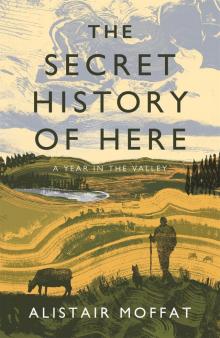 The Secret History of Here
The Secret History of Here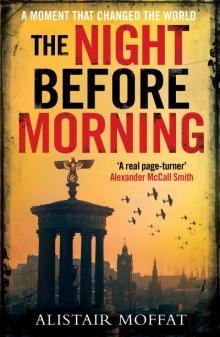 The Night Before Morning
The Night Before Morning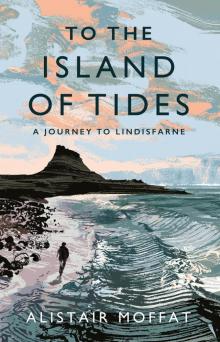 To the Island of Tides
To the Island of Tides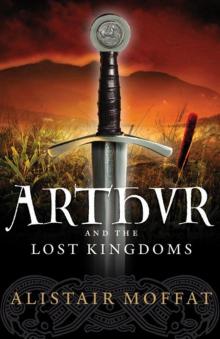 Arthur and the Lost Kingdoms
Arthur and the Lost Kingdoms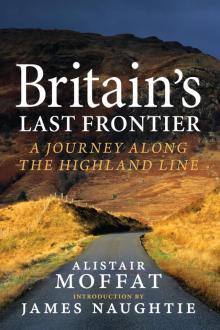 Britain’s Last Frontier
Britain’s Last Frontier The Faded Map: The Lost Kingdoms of Scotland
The Faded Map: The Lost Kingdoms of Scotland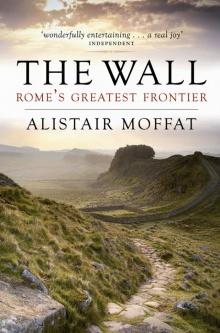 The Wall
The Wall